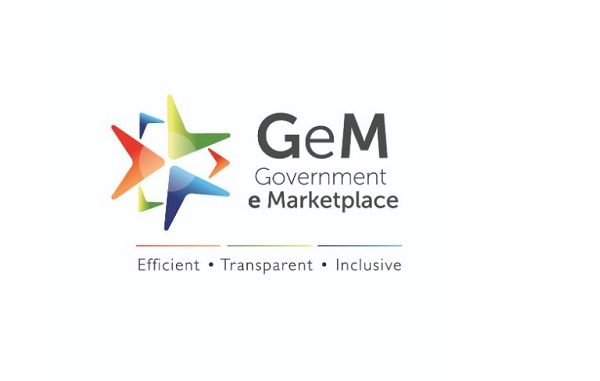
Jun 16: Secretary, department of Commerce, Government of India Dr Anup Wadhawan today said that Government e-Marketplace (GeM) is providing increasing market access to seller groups like MSEs, Women SHGs, Startups reinforcing the Make in India Initiative and Govt of India’s policy to promote local MSEs.
Speaking to media, he said that presently GeM has over 6,90,000 MSE sellers and service providers onboard contributing over 56% of the total order value on GeM, which is a testament to GeM’s success in not only onboarding but also engaging with the MSEs to help them participate in public procurement. The number of MSEs registered on the GeM platform has increased by over 62% since the last FY (2019-20). And this is a tremendous achievement- considering that there were only around 3000 MSMEs in FY 2016-17.
Since its inception in August 2017, GeM has facilitated 67.27 lakh orders worth 111,113 Crores from 18.85 lakh registered sellers and service providers for 52,275 Govt buyers. Most importantly, 6,95,432 MSE sellers and service providers have fulfilled 56.13 percent of the total order value on GeM.
Recently, MSME Ministry launched a new Udyam Registration Scheme for all MSME businesses as per the new MSME policy. The new Udyam form has a provision to take consent from businesses for auto-registration on GeM portal. In order to further smoothen the seller registration process for MSEs on the portal, GeM has operationalized API integration with Udyam Registration databases and details of MSMEs, who have given their consent to share their details with GeM, are being auto imported on GeM for creation of their seller profile and notification. As on 31st May 2021, 18,75,427 vendors are registered on GeM out of which 6,98,178 are MSEs and the share of procurement from MSEs on the portal is approx. 57 percent.
Providing online market access to under-served seller groups has reinforced the “Atmanirbhar Bharat”, “Vocal for Local”, “Make in India” initiative and Govt of India’s policy to promote local MSEs. The GeM platform has ensured effective and seamless implementation of the Make in India policy and the Public Procurement Policy for Preference to Micro and Small Enterprises. In order to provide an impetus to the Make in India initiative as part of the vision of “Aatmanirbhar Bharat”, and to promote local products through the “Vocal for Local” initiative, the Government has made it mandatory for all sellers on GeM to list the Country of Origin while registering new products.
GeM is a dedicated platform for Startups to list their innovative products under 10 globally recognized Startup subsectors was launched on 15th November 2019. At present there are 9,980 Startups registered on GeM and 87 of these Startups have listed their innovative products on Startup Runway.
To address the credit access challenges faced by MSMEs a latest functionality also being rolled out specially for SMEs is the GeMSAHAY app. The #GeMSAHAY initiative paves way for frictionless financing by leveraging fintech. MSEs can now get a loan at the point of acceptance of an order on the #GeM platform. It will help in meeting the working capital needs and ensure “access to finance” for MSEs.
One of the major challenges faced by SMEs is access to timely cash-flow based financing, since borrower assessment is typically being done on collaterals. Even though there are schemes like TReDS which facilitate loans, SMEs continue to find it difficult to avail of uncollateralized cash-based loans. These challenges had been reviewed and recommendations were made towards resolving the same by RBI’s UK Sinha MSME Committee through its report in June 2019. The ‘SAHAY’ initiative- a mobile application for lending- comparable to BHIM for the Unified Payments Interface (UPI), was launched to address these issues.
GeM is collaborating with the Indian Software Product Industry Round Table (iSPIRT), a non-profit tech think tank’s volunteer team for the implementation of the GeM- SAHAY project, which has been tailored to meet the specific needs of MSMEs on the GeM platform. Sellers applying for the loan facility will experience a seamless end to end digital experience with a mobile application.
Through the ‘GeM SAHAY’ app, loan disbursement will be instantaneous, instead of the conventional in-principle approval of loan that may very often not culminate in an actual disbursal. This facility will provide GeM sellers who are sole proprietors, with the best loan offers from top lenders in the country including public sector banks, private banks and NBFCs.
The GeM SAHAY platform is ‘lender agnostic’, allowing for any lender, duly regulated by the Reserve Bank of India, to participate and provide capital and smart collection accounts to the Sellers on GeM.
GeM is proactively implementing several functionalities to ensure that payment cycles are kept as short as possible so that MSEs are incentivized to participate in public procurement in large numbers. GeM has designed its payment terms such that Buyers are mandated to make payments within 10 days of acceptance of material. Also, GeM has implemented a process under which if a buyer or a consignee does not take timely actions in accepting / rejecting the material or in making the payments, the GeM system itself triggers reminders and also initiates auto PRC, Auto CRAC and auto payments in the case of General Pool Account payment method. Further a provision has been introduced which will penalize the Buyers in terms of deduction of interest penalty on their funds if they delay payments to sellers against GeM contracts.
GeM was the first e-commerce portal in the country which had started displaying the “Country of Origin” of all products on the product description page prominently for giving its Buyers the right to make informed decision of procurement. Now it is mandatory for all sellers to upfront declare the Country of Origin without which they cannot upload products on GeM.
Going a step further, GeM has also started highlighting the Local Content % on the product description page prominently. So even within the products made in India, buyers can identify products that have higher local content and take informed decision accordingly. Buyers have been provided with a filter in the marketplace to identify and select products from amongst MII complaint sellers / products only. Sellers who do not declare Local Content % while uploading product and creating catalogue on GeM will lose out on business and will not be able to participate in bids in which buyer has chosen to procure only MII compliant products.
Public Procurement Policy for Preference for MSE and Make in India are fully implemented on GeM. In the GeM Marketplace a MII filter has been provided using which the Buyer can filter out all non-local suppliers and restrict its procurements under Direct Purchase and L-1 Purchase from amongst Local Suppliers only.
GeM has been working closely with Ministry of Rural Development, Ministry of Tribal Affairs, Ministry of Textiles, Ministry of MSME, National Bamboo Mission, Ministry of Agriculture to develop “GeM Outlet Stores” and provide online “access to markets” for under-served seller groups in remote rural areas. A dedicated portal showcasing exquisitely handcrafted tribal handicrafts, textiles, paintings and minor forest produce was developed with TRIFED, Ministry of Tribal Affairs and launched on 27th June 2020. Presently, there are more than 4,000 products made by tribal entrepreneurs are listed on the portal. GeM has initiated the seamless onboarding of nearly 18 lakh artisans and 35 lakh weavers/ allied workers with Department of Handicrafts and Handloom, Ministry of Textiles on 17th July 2020. At present 28,365 artisans and 1.49 lakh weavers have been registered on GeM as sellers and are in the process of uploading their products in the relevant product categories. “ Khadi India” also showcasing a range of exquisitely handwoven natural fibre cloth products from the weavers of India and aims to provide them in rural areas with market access to Government byers. More than 4,100 sellers have successfully registered on the GeM portal. “The Divyangjan Collection” being a unique initiative to showcase finely crafted products made by persons with disabilities/ Divyangjan and aims to provide divyangjan with market access to Government buyers, NGOs working with Divyangjan can list their products in 6 exclusive product categories and in the regular marketplace on GeM.
The Saras Collection is a dedicated portal showcasing daily utility products made by self-help groups [SHG] was developed in collaboration with Ministry of Rural Development and launched on 04th May 2020. Presently, there are more than 3,000 SHGs registered sellers on GeM and have listed approximately 1,000 products on the portal.
A unique initiative of the National Bamboo Mission and GeM, “The Green Gold Collection” showcases a range of exquisitely handcrafted bamboo and bamboo products, handicrafts, disposals and daily utility products, and aims to provide bamboo artisans, weavers and entrepreneurs in rural areas with market access to Government buyers. Approximately more than 1,200 sellers have successfully registered and listed their products on the portal. This initiative seeks to promote the adoption and use of bamboo products among Govt buyers and usher a sustainable rural economy for an Atmanirbhar Bharat.
GeM has dedicated outreach and training teams which provide both offline and online needs-based trainings and webinars to empower all sellers across the country, in their language and customized to their unique contexts. GeM also has a dedicated online Learning Management System (LMS) Portal has been developed where all training resources on using the platform have been uploaded. The chatbot “GeMmy” provides an array of services like a virtual assistant while onboarding any type of seller on to the platform for intuitive contextual assistance.
Disclaimer: We donot claim that the images used as part of the news published are always owned by us. From time to time, we use images sourced as part of news or any related images or representations. Kindly take a look at our image usage policy on how we select the image that are used as part of the news.

